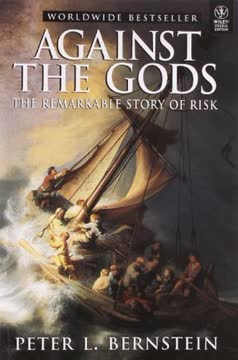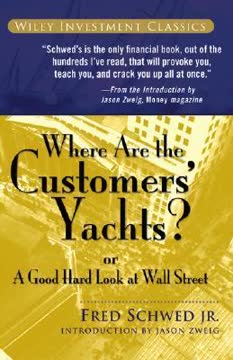Key Takeaways
1. Speculation is a Fundamental Human Impulse
"All life is speculation," declared the celebrated nineteenth-century American trader James R. Keene, "the spirit of speculation is born with men."
Speculation as Human Nature. The book reveals that speculation is not merely a financial activity but a deeply ingrained human characteristic. From ancient Rome to modern Wall Street, people have been driven by an innate desire to anticipate the future and profit from uncertainty.
Historical Evidence of Speculative Instincts:
- Roman merchants trading shares in public companies
- Medieval traders speculating on tulip bulbs
- Colonial land speculation in early America
- Modern-day day traders and cryptocurrency investors
Psychological Motivations. Speculation stems from fundamental human traits like hope, risk-taking, and the desire for rapid economic advancement. It represents a universal dream of transforming modest resources into significant wealth through strategic anticipation.
2. Speculative Manias Follow Predictable Psychological Patterns
"Men, it has been well said, think in herds; it will be seen that they go mad in herds, while they only recover their senses slowly, and one by one."
Crowd Psychology. Speculative bubbles are not random events but predictable manifestations of collective human psychology. They typically involve a shared delusion, where rational individual thinking gives way to mass excitement and unrealistic expectations.
Common Characteristics of Speculative Manias:
- Widespread belief in a "new era" of prosperity
- Increasing participation across social classes
- Exponential rise in asset prices
- Increasing use of leverage and credit
- Eventual catastrophic collapse
Emotional Dynamics. Speculation transforms from a rational economic activity to an almost religious fervor, with participants believing they are part of something revolutionary and inevitable.
3. Technology and Innovation Drive Speculative Bubbles
"Innovation is the outstanding fact in the economic history of capitalist society."
Technological Catalyst. New technologies consistently provide the spark for speculative manias. From railroads to the internet, technological advances create excitement, promise, and opportunities for rapid wealth creation.
Innovation Patterns in Speculation:
- Railways in the 1840s
- Automobiles in the 1920s
- Internet stocks in the 1990s
- Cryptocurrency in the 2010s
Speculative Mechanism. Technological innovations create uncertainty about future potential, allowing speculators to project extraordinary value onto emerging technologies, often far beyond their actual economic worth.
4. Political and Economic Conditions Fuel Speculative Excess
"The government failed to find a balance between its economically liberal instincts and its moral repugnance to speculation."
Regulatory Environment. Speculative bubbles frequently emerge during periods of loose monetary policy, minimal government regulation, and widespread economic optimism. Political laissez-faire attitudes create fertile ground for speculative excesses.
Key Enabling Conditions:
- Low interest rates
- Minimal financial regulation
- Cultural belief in unlimited economic growth
- Political support for free-market ideologies
Political Complicity. Governments often inadvertently encourage speculation through monetary policies, tax structures, and a philosophical commitment to economic liberalism.
5. Markets are Driven by Human Emotions, Not Rational Calculation
"Speculation is an effort, probably unsuccessful, to turn a little money into a lot."
Psychological Foundations. Financial markets are not rational systems but emotional ecosystems driven by human psychology, including fear, greed, hope, and herd mentality.
Emotional Market Dynamics:
- Overconfidence during bull markets
- Panic during market crashes
- Tendency to follow crowd sentiment
- Susceptibility to rumor and manipulation
Cognitive Limitations. Investors consistently demonstrate an inability to make purely rational decisions, instead being guided by psychological biases and emotional responses.
6. Governments Rarely Successfully Regulate Speculation
"Direct interference on our part with the mania of railway speculation seems impracticable."
Regulatory Ineffectiveness. Historical evidence suggests that government attempts to control speculation through legislation are typically ineffective and often counterproductive.
Regulatory Challenges:
- Difficulty in defining speculative boundaries
- Political and economic complexity
- Rapid financial innovation
- Resistance from financial industry
Unintended Consequences. Attempts to regulate speculation frequently create more sophisticated methods of circumventing restrictions, leading to increasingly complex financial instruments.
7. New Technologies Create Opportunities for Speculation
"The information standard has replaced the gold standard as the basis of world finance."
Technological Transformation. Advances in communication and information technology continuously create new speculative opportunities and transform financial markets.
Technological Speculation Enablers:
- Telegraph
- Telephone
- Computer networks
- Internet
- Cryptocurrency platforms
Market Evolution. Each technological wave provides new mechanisms for speculation, democratizing financial participation and creating novel investment vehicles.
8. Insider Manipulation and Fraud are Endemic to Speculative Periods
"The Exchange had become a glorified casino where the odds were heavily weighted against the eager outsiders."
Systemic Corruption. Speculative periods are consistently characterized by market manipulation, insider trading, and fraudulent practices.
Manipulation Techniques:
- Stock pooling
- False rumor propagation
- Insider trading
- Deliberate market misinformation
- Complex financial engineering
Ethical Breakdown. During speculative manias, traditional ethical boundaries erode as participants prioritize potential profits over moral considerations.
9. Speculation Reflects Broader Social and Cultural Dynamics
"Imagination, in this country, lives in the future rather than the past."
Societal Mirror. Speculative periods reveal deeper cultural attitudes about risk, opportunity, and social mobility.
Cultural Insights from Speculation:
- Attitudes toward economic advancement
- Appetite for risk
- Belief in individual opportunity
- Technological optimism
Psychological Landscape. Speculation provides a window into collective hopes, fears, and dreams of economic transformation.
10. Financial Innovation Enables More Complex Speculation
"Derivatives are essentially industrial raw materials created to cope with uncertainty."
Financial Engineering. Continuous financial innovation creates increasingly sophisticated mechanisms for speculation and risk transfer.
Innovation Progression:
- Basic futures contracts
- Complex derivatives
- Algorithmic trading
- Cryptocurrency
- Blockchain-based financial instruments
Complexity Cycle. Each wave of financial innovation creates new speculative opportunities while simultaneously increasing market complexity and potential systemic risk.
11. The Cycle of Boom and Bust is Inevitable in Capitalist Systems
"Progress is cumulative in science and engineering but cyclical in finance."
Economic Rhythm. Capitalist economies inherently oscillate between periods of expansion and contraction, with speculation playing a crucial role in these cycles.
Cyclical Characteristics:
- Predictable patterns of euphoria and panic
- Recurring speculative manias
- Consistent human psychological responses
- Inherent market volatility
Systemic Nature. These boom-and-bust cycles are not aberrations but fundamental features of capitalist economic systems.
Last updated:
FAQ
What's Devil Take the Hindmost about?
- Exploration of speculation: The book provides a historical overview of financial speculation, tracing its evolution from ancient Rome to modern times. It examines how speculation has influenced economies and markets throughout history.
- Key historical events: Edward Chancellor discusses significant speculative bubbles, such as the South Sea Bubble, the Railway Mania, and the 1929 stock market crash, analyzing the causes and consequences of these events.
- Psychological and economic factors: The narrative connects historical instances to contemporary financial practices, critiquing the behavior of market participants and emphasizing the psychological aspects of speculation.
Why should I read Devil Take the Hindmost?
- Insightful historical context: The book provides a comprehensive understanding of how historical financial crises have shaped current economic practices, connecting past events to present-day financial behaviors.
- Lessons on human behavior: Chancellor delves into the psychology of investors and speculators, offering insights into why people make irrational financial decisions, which can help readers navigate their own investment choices.
- Cautionary tale: It serves as a warning about the dangers of speculation and the potential consequences of financial excess, encouraging readers to think critically about their investment strategies.
What are the key takeaways of Devil Take the Hindmost?
- Speculation vs. investment: The book emphasizes the thin line between speculation and investment, highlighting that speculation is often driven by emotions like greed and fear.
- Role of government: Chancellor discusses how government actions can stimulate or suppress speculative behavior, illustrating the importance of regulation in maintaining market stability.
- Psychology of markets: The book explores the psychological aspects of speculation, including how crowd behavior and mass delusion can lead to financial manias and subsequent crashes.
What are the best quotes from Devil Take the Hindmost and what do they mean?
- "Men, it has been well said, think in herds; it will be seen that they go mad in herds." This quote reflects the idea that collective behavior can lead to irrational decision-making in financial markets, resulting in speculative bubbles.
- "The spirit of speculation is born with men." This suggests that the tendency to speculate is an inherent part of human nature, influencing economic behavior throughout history.
- "The most expensive words in the English language are 'this time it's different.'" This quote warns against the hubris of believing that current market conditions are unique and immune to the historical patterns of speculation and collapse.
How does Devil Take the Hindmost explain the relationship between speculation and financial crises?
- Historical patterns: Chancellor illustrates that speculative manias often precede financial crises, as seen in historical examples like the South Sea Bubble and the Tulip Mania.
- Government involvement: The book discusses how government policies can exacerbate or mitigate speculative behavior, highlighting the need for regulatory frameworks to prevent crises.
- Cycle of speculation: The author describes a cyclical pattern where periods of speculation are followed by crashes, leading to a temporary loss of confidence in markets.
What is the definition of speculation according to Devil Take the Hindmost?
- Attempt to profit: Speculation is defined as an attempt to profit from changes in market prices, often involving a willingness to forgo current income for potential capital gains.
- Active vs. passive: The book contrasts speculation with investment, noting that speculation is generally more active and involves a higher degree of risk.
- Psychological factors: Speculation is influenced by psychological factors, including crowd behavior and emotional responses to market conditions.
What role does government play in speculation according to Devil Take the Hindmost?
- Regulatory influence: The book argues that government policies can either encourage or suppress speculative behavior, depending on the regulatory environment.
- Historical examples: Chancellor provides historical examples where government actions have led to speculative manias, illustrating the consequences of poor oversight.
- Need for caution: The author warns that governments must be cautious in their approach to speculation, as excessive intervention can lead to unintended consequences.
How does Devil Take the Hindmost address the psychology of speculation?
- Emotional drivers: The book emphasizes that speculation is often driven by emotions such as greed and fear, which can cloud judgment and lead to irrational investment decisions.
- Crowd behavior: Chancellor discusses how crowd psychology can amplify speculative behavior, as individuals are influenced by the actions and sentiments of others.
- Self-fulfilling prophecies: The author notes that speculators can create their own realities through collective actions, leading to phenomena like market bubbles.
What is the significance of the South Sea Bubble in Devil Take the Hindmost?
- Historical example of speculation: The South Sea Bubble serves as a key historical example of how speculation can lead to financial disaster.
- Lessons learned: The author uses the South Sea Bubble to highlight the importance of regulation and oversight in financial markets.
- Impact on public perception: The bubble significantly affected public perception of financial markets and speculation, leading to calls for reform.
How does Devil Take the Hindmost relate to the Japanese Bubble Economy?
- Case study of zaitech: Chancellor examines the Japanese Bubble Economy as a case study of zaitech, or financial engineering, where companies engaged in speculative practices to boost profits.
- Government involvement: The book discusses the role of the Japanese government and financial institutions in fostering the bubble through lax regulations.
- Consequences of the bubble: The collapse of the Japanese Bubble Economy serves as a warning about the risks of excessive speculation.
What are the psychological factors influencing speculation discussed in Devil Take the Hindmost?
- Herd mentality: Chancellor emphasizes that investors often follow the crowd, leading to irrational market behavior and the formation of bubbles.
- Fear and greed: The book discusses how fear and greed drive investor behavior, often leading to extreme market fluctuations.
- Cognitive biases: The author highlights various cognitive biases that affect decision-making in financial markets, such as overconfidence and loss aversion.
What are the implications of speculation for modern financial markets as discussed in Devil Take the Hindmost?
- Increased volatility: The book suggests that speculation contributes to increased volatility in financial markets, making them more susceptible to sudden crashes.
- Regulatory challenges: Chancellor highlights the challenges regulators face in managing speculative behavior, particularly in the context of complex financial instruments.
- Long-term economic impact: The author warns that unchecked speculation can lead to long-term economic instability, as seen in historical examples.
Review Summary
Devil Take the Hindmost is praised for its comprehensive history of financial speculation, from ancient Rome to the 1990s. Readers appreciate Chancellor's engaging storytelling and insightful analysis of recurring patterns in market bubbles. The book is lauded for its detailed accounts of famous speculative manias, including the Dutch Tulip mania and the South Sea Bubble. While some find the writing dense and occasionally repetitive, most consider it an essential read for understanding market psychology and the cyclical nature of financial crises.
Similar Books










Download PDF
Download EPUB
.epub digital book format is ideal for reading ebooks on phones, tablets, and e-readers.





